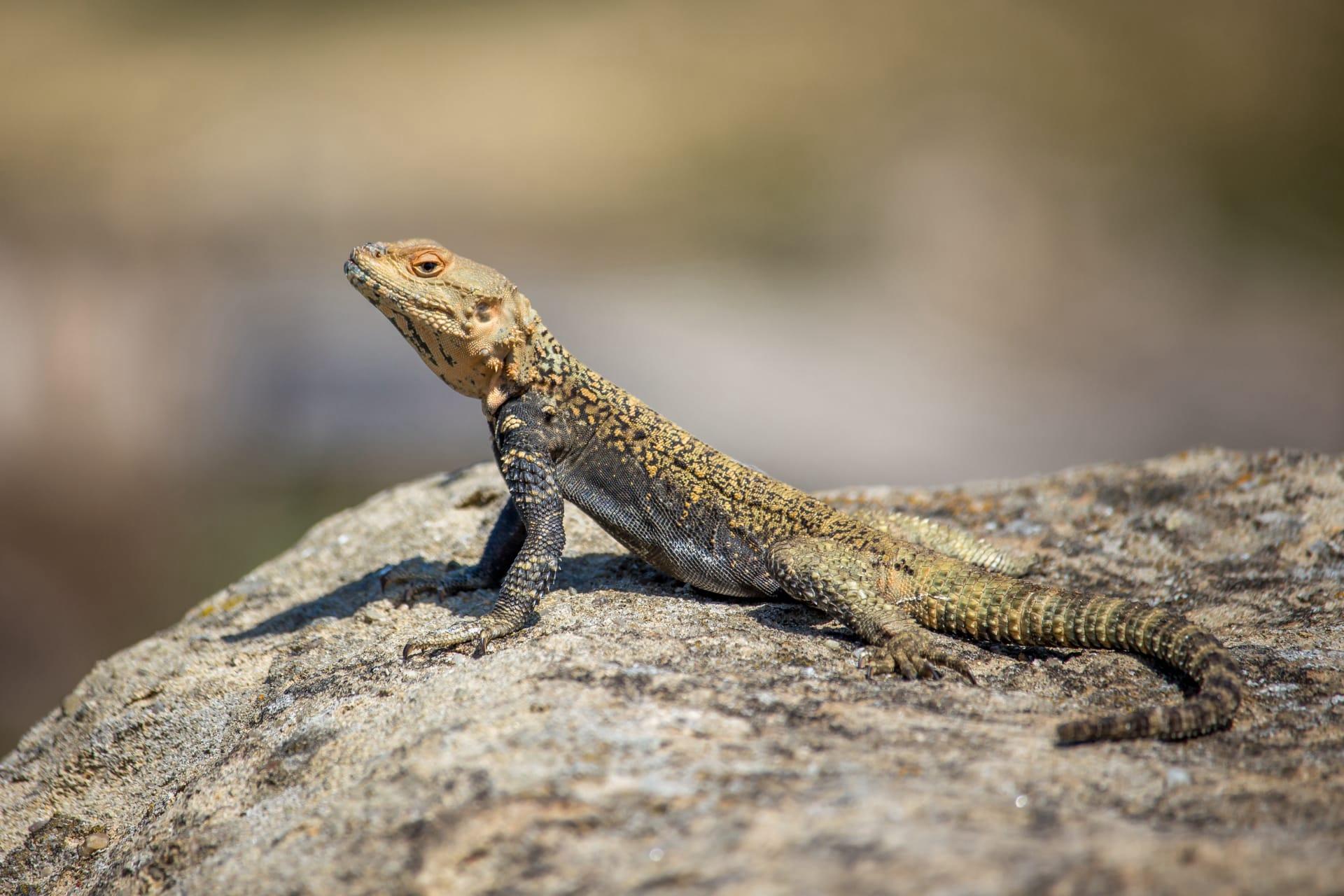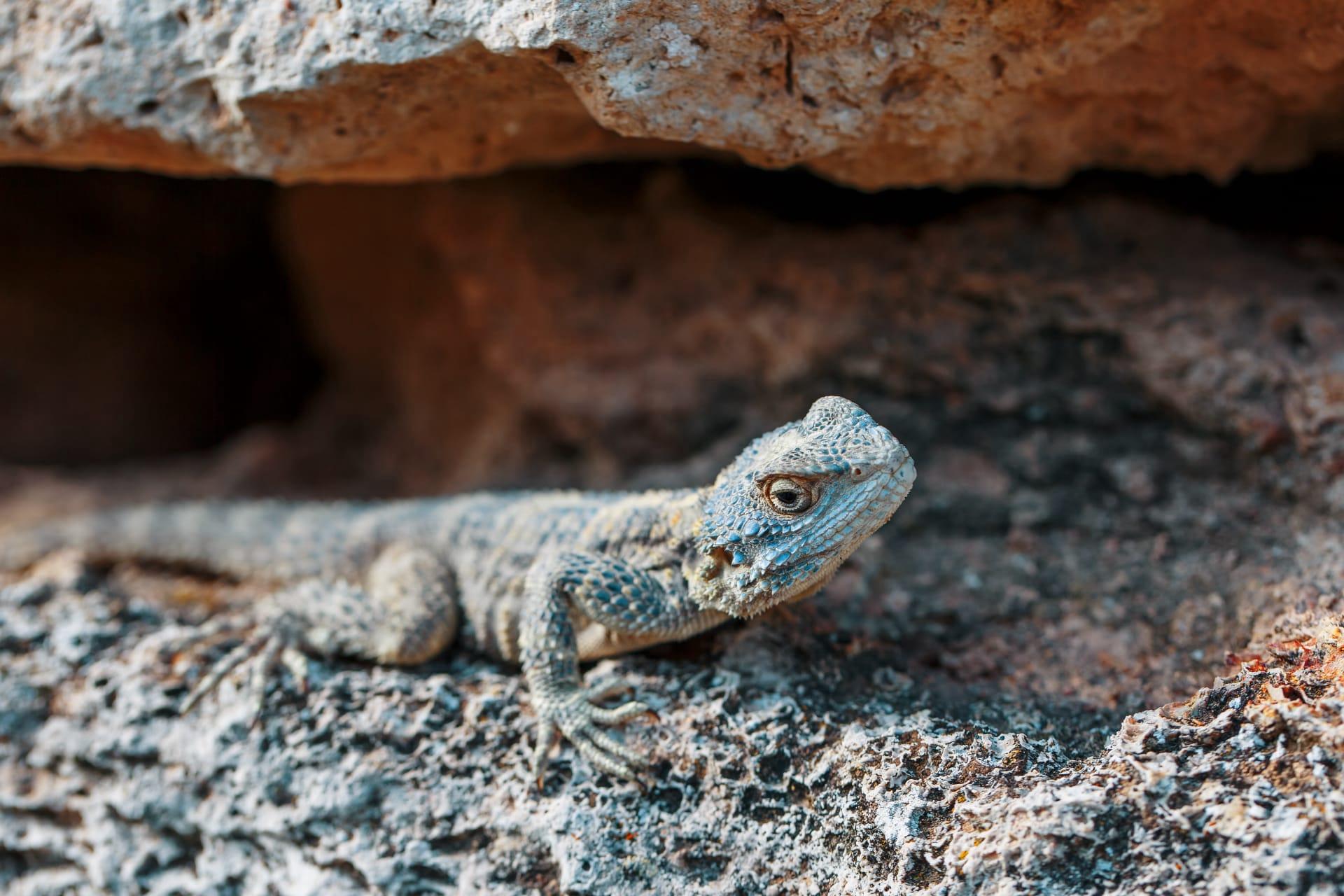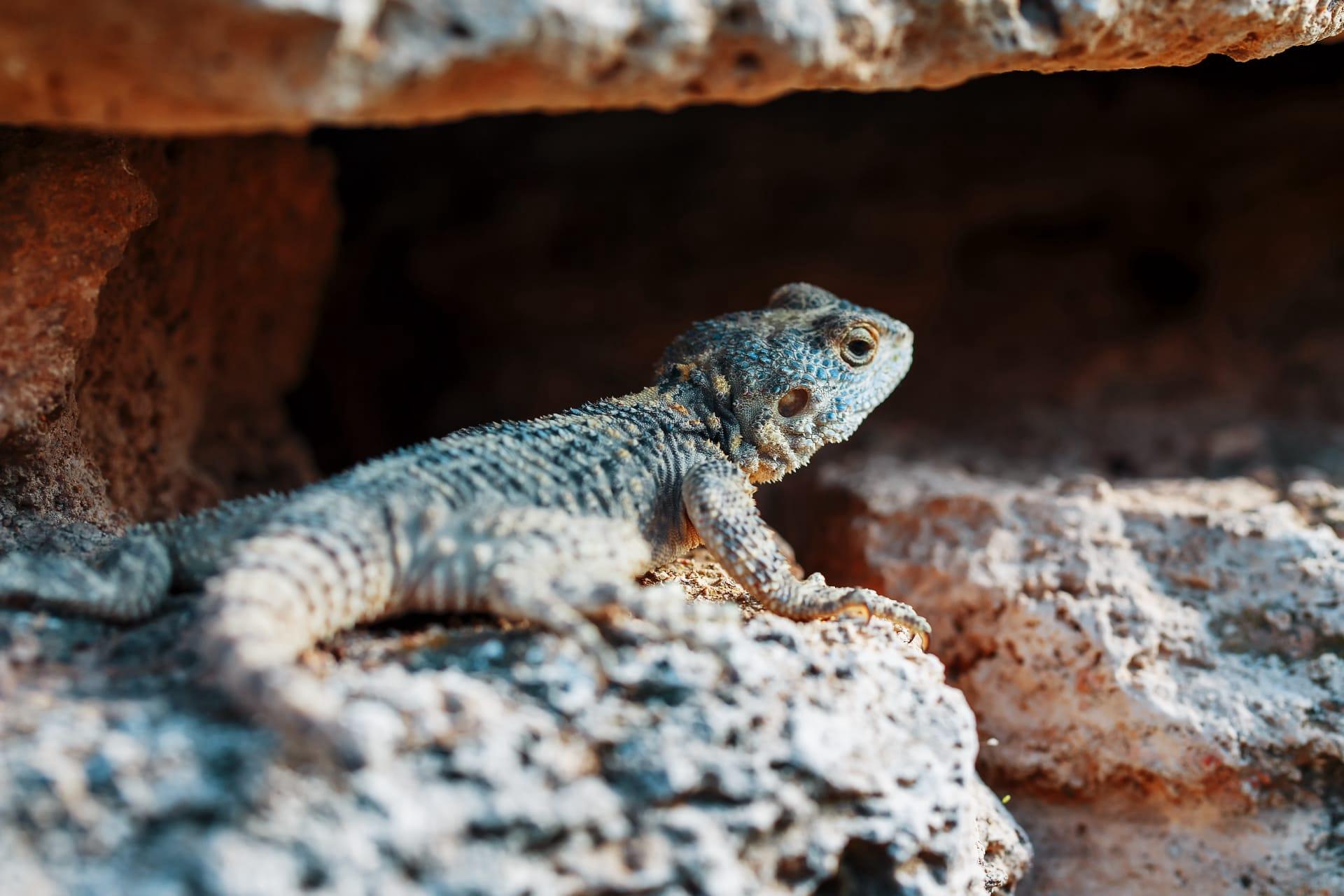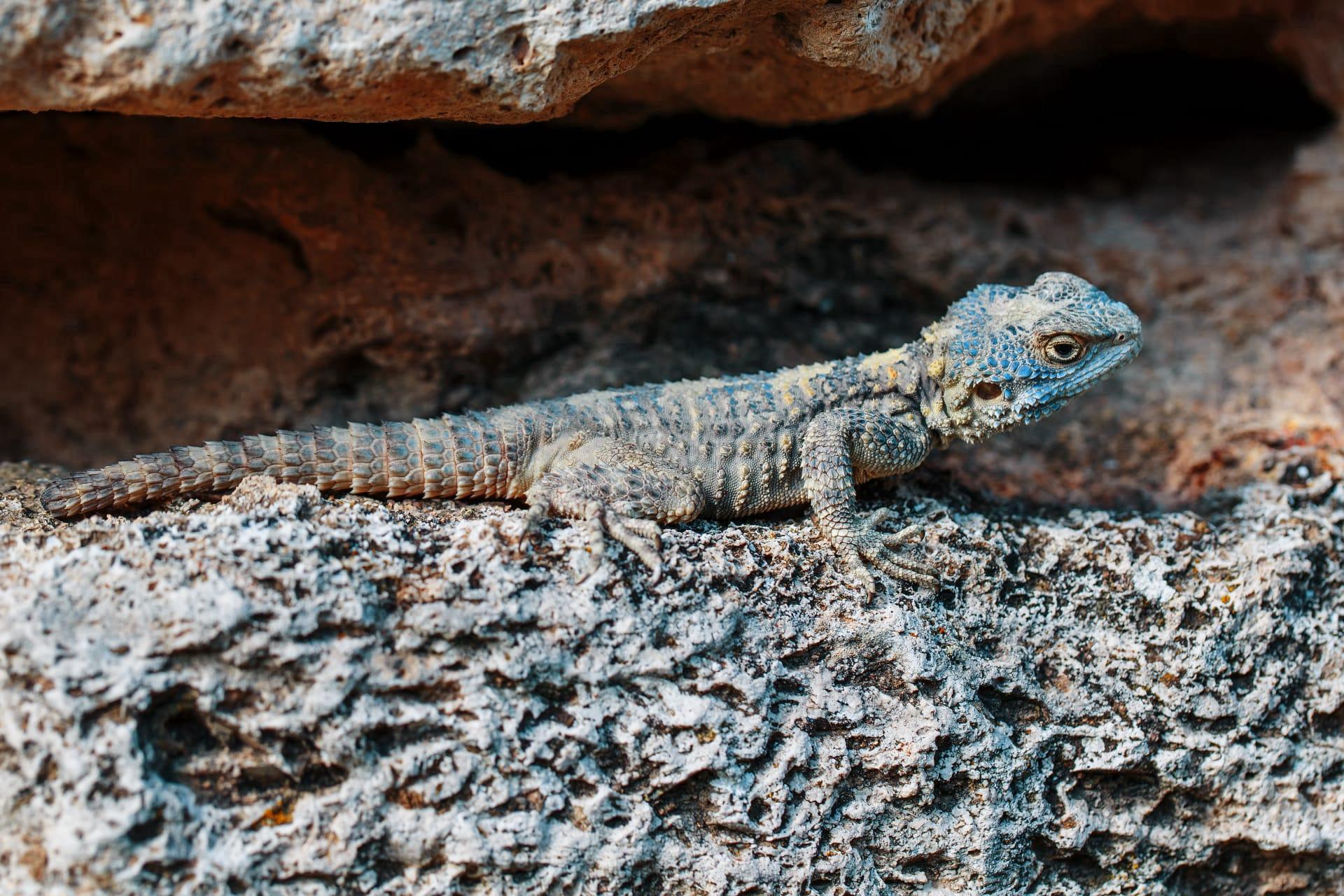1
Did you know that the African Spiny Tailed Lizard is a master of camouflage? These fascinating creatures have the ability to change their skin color to blend in with their surroundings. This is not just a simple color change; it's a complex process involving the expansion and contraction of special cells containing different pigments. They primarily use this ability to avoid predators and to regulate their body temperature. On a sunny day, they might turn a lighter shade to reflect sunlight and stay cool, while on cooler days, they become darker to absorb more heat.
Another remarkable fact about these lizards is their tail, which is not just for show. It's covered in hard, spiny scales that provide a formidable defense against predators. When threatened, the African Spiny Tailed Lizard can wedge itself into a tight rock crevice, leaving only its spiny tail exposed. Predators find it nearly impossible to extract the lizard from its hiding spot due to the spiky barrier. This unique adaptation has helped them thrive in the rocky environments of Africa.

2
One of the lesser-known facts about the African Spiny Tailed Lizard is their social structure. Unlike many reptiles that are solitary, these lizards often live in small groups. This social behavior is particularly evident during the basking period in the morning when they are seen sunning themselves on rocks in groups. These gatherings are not just for warmth; they also serve as a protective measure against predators since multiple pairs of eyes are better than one.
Additionally, the African Spiny Tailed Lizard has a unique way of communicating with its peers. They use a combination of body postures, head-bobbing, and tail movements to convey different messages. For example, a rapid head-bobbing might be a sign of dominance or a warning to other lizards. This complex communication system is vital for maintaining social hierarchy and territory within their groups.

3
Diet-wise, the African Spiny Tailed Lizard has an interesting palate. They are primarily insectivores, feasting on a variety of insects like beetles, ants, and small moths. What's fascinating is their hunting technique. They have a sit-and-wait approach, where they remain motionless and blend into the surroundings until an unsuspecting insect comes within range. Then, with lightning speed, they snap up their prey. This efficient hunting strategy conserves energy and increases their success rate.
These lizards are also known for their longevity. In the wild, they can live up to 15 years, which is quite long for a lizard of their size. In captivity, with proper care and absence of predators, they can live even longer. This longevity is attributed to their adaptable diet, effective defense mechanisms, and ability to thrive in various environmental conditions.

4
The African Spiny Tailed Lizard has a unique adaptation to its arid habitat: they can survive long periods without direct access to water. They obtain most of the moisture they need from their food, and their bodies are adapted to minimize water loss. Their skin is relatively impermeable, and they excrete waste in a semi-solid form to conserve water. This adaptation is crucial for survival in their dry, rocky habitats where water sources can be scarce.
Another interesting aspect is their reproduction. These lizards are oviparous, meaning they lay eggs. The female lizard lays a clutch of around 2-10 eggs in a burrow or under rocks, providing a safe and warm environment for incubation. The eggs hatch after about 60-70 days, and the young are independent from birth. They receive no parental care, which is typical for many reptile species. This independence from a young age is vital for survival in their harsh environment.

5
Did you know that the African Spiny Tailed Lizard can shed its tail to escape predators? This phenomenon, known as autotomy, allows the lizard to break off a portion of its tail when caught by a predator. The detached tail wiggles and writhes, creating a distraction and allowing the lizard to escape. Remarkably, they can regenerate the lost tail, though the new one may not be as long or perfectly shaped as the original.
Last but not least, these lizards play a crucial role in their ecosystem. They help control insect populations, which can be pests to both plants and humans. Moreover, their presence indicates a healthy ecosystem, as they are sensitive to environmental changes and pollution. Therefore, the African Spiny Tailed Lizard not only fascinates us with its unique characteristics but also plays a significant part in maintaining ecological balance.